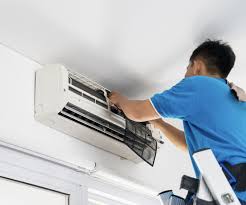
The year 2020 has been one of massive change. Many people have had to alter how they live their lives in the wake of a deadly virus that has killed hundreds of thousands of people. A new version of “normal” is upon us, and many of our lifestyle changes are having a flow-on effect for businesses. Here are some of the key workplace changes that could become permanent:
Working from Home
It hasn’t taken entrepreneurs long to realize that a virtual office is the perfect solution for businesses impacted by COVID-19. To save money and keep people safe, many workers have decided to make home offices a permanent move.
However, in the wake of that decision, business owners have an important choice to make – one that revolves around maintaining a professional image. Do you allow your customers to know you work from home?
A virtual office is a service that allows you to take advantage of a business address for mail-forwarding and phone call purposes. Your business cards and advertising can offer the illusion that you work from a business district – even when you don’t.
Socially-Distanced Layouts
The average workspace has undergone many upgrades over the years. Once upon a time, everyone had their own executive office. Then hot-desking crept in as the new normal. However, COVID-19 has well and truly changed how workplaces must be laid out.
Not only are hot desks being replaced with permanent workstations, but each desk is being spaced out to allow for social distancing. Many businesses are also saying goodbye to meeting rooms and cramped lunchrooms.
Strict Hygiene Practices
Workplaces are traditionally some of the worst areas to harbor germs. That doesn’t exactly offer business owners much confidence as the world battles COVID-19. So, strict hygiene practices are being put in place to make sure workers can be as safe as possible.
Some of these practices include hand sanitizer stations, Plexiglas and Perspex divider screens, and more frequent visits by cleaners. While workers often turn up to work with a slight sniffle, some bosses are requiring COVID-19 tests and enforcing work-from-home orders.
Sparser Spaces
Before coronavirus swept its way around the world, workers were able to customize their space to make it cozy and comfortable. However, it’s looking like this will be a thing of the past. One of the most significant changes in recent months has been the removal of anything remotely risky for spreading germs.
Fabric furniture is out the door, as are magazines for visitors in waiting areas. Many companies are even asking their workers to declutter their workspaces to make it easier to clean them regularly.
Staggered Hours
If employees can’t work from home, some businesses are opting for staggered hours to improve the health and safety of the space and their team. Where social distancing of the recommended six feet is not possible, workers may be on adjusted hours to allow for the same amount of work to be carried out, but with a smaller team.
Such practices are becoming commonplace in factories. In fact, recommendations around the world are that a single employee should be encouraged to complete the job of two people on an assembly line where social distancing is otherwise not achievable.
It’s looking likely that we will operate with the shadow of COVID-19 for many months or years to come. With that in mind, workplace changes that are put in place now are likely to be permanent. From open spaces to strict hygiene practices and virtual offices, there is plenty the average worker has to get used to.
